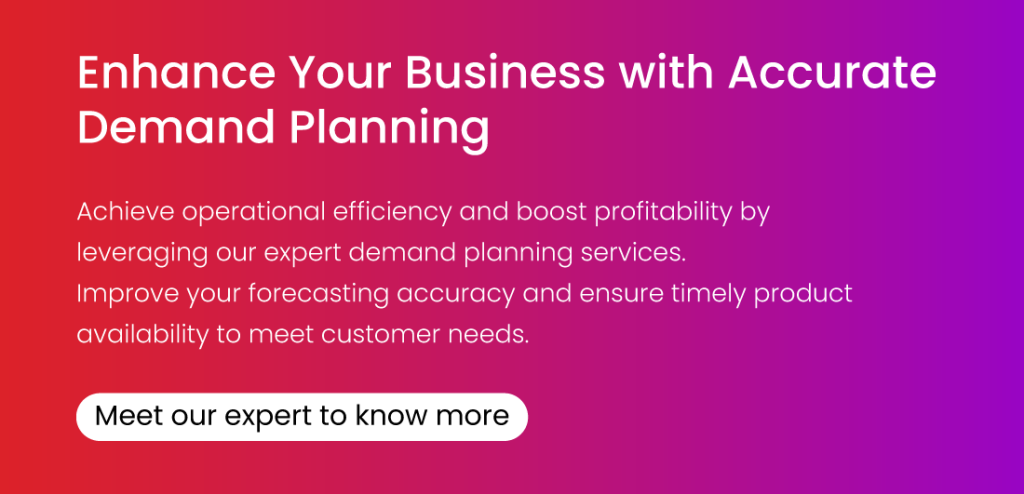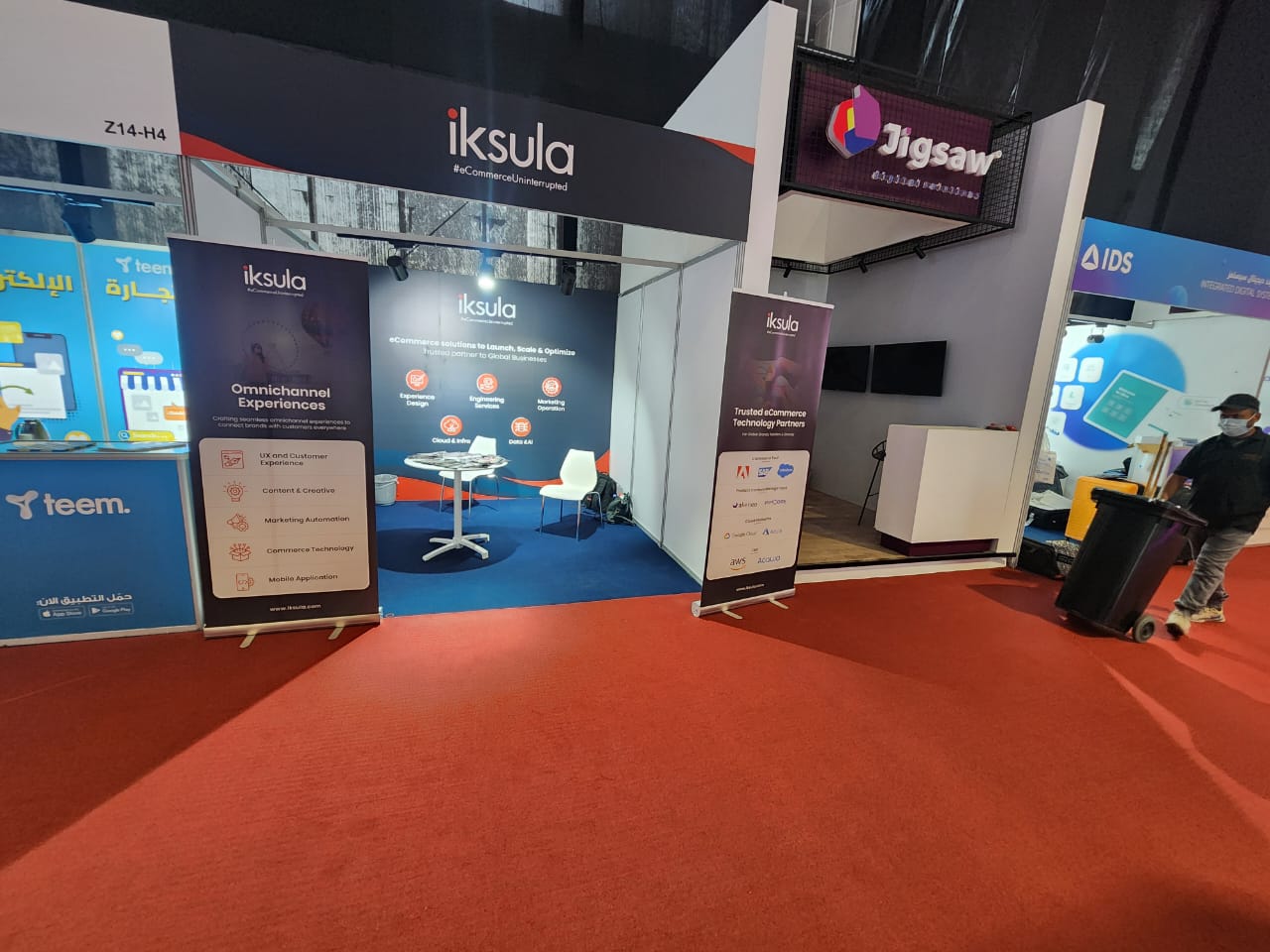The mismanagement of inventory stock remains a significant problem across different sectors. Inadequate supply affects sales and reduces customer satisfaction. Meanwhile, a surplus of inventory stock increases operating expenses. In both cases, the brand name is tainted. Demand Planning can help you find a balance between these two scenarios, ensuring profitability and customer loyalty.
Demand planning has become more crucial in today’s ever-changing market. We can amplify customer satisfaction through predicting future demands accurately, streamlining operations, and maintaining optimal stock levels. This process can also help enhance business profitability.
Data is the foundation of effective demand planning. Strong forecasting models are constructed using careful and comprehensive data collection and preprocessing.
What is demand planning?
Demand planning predicts future demand for a product or service. It considers factors such as previous sales, market trends, and consumer behaviour. It is an important part of inventory management. Demand planning assists companies in making informed decisions about how much product to produce, how much to buy, when to distribute the products, and where to distribute them.
Accurate demand planning can help businesses reduce stock shortages and prevent overproduction. Companies can ensure that they have the right amount of inventory on hand to fulfill customer needs. When customer needs are met in a timely manner, customer satisfaction and product sales go up.
How does Demand Planning function?
Demand planning accurately predicts future customer demands through refined strategies. Accurate demand forecasting allows companies to optimize their inventory levels and streamlines their operations. This process, in turn, increases customer satisfaction.
Let’s break down the phases of demand planning:
The initial phase involves meticulous data collection and analysis of said data. Demand planning specialists analyse factors such as historical sales data, market trends, and economic indicators. They detect patterns, seasonality, and anomalies. This makes for a strong foundation for building forecasting models. Forecasting approaches range from traditional time series analysis and causal modeling to more advanced ones like qualitative methods and machine learning techniques. These methods depend on the available data and desired accuracy.
After generating a demand forecast, it must undergo thorough validation and refinements. Regular comparisons between what has been projected and actual demand will help ascertain its accuracy. These comparisons can also help to facilitate adjustments wherever necessary. Effective demand planning requires collaboration across departments like finance, operations, marketing, and sales. All actions contribute towards achieving overall business goals. It is essential to establish and maintain open communication to share insights and feedback. The demand plan is then executed by adjusting accurate inventory levels, placing orders with suppliers, and coordinating logistics. Firms should continuously monitor performance metrics like forecast accuracy and inventory turnover. This can help them identify areas that need improvement for refining this process.
Optimal demand planning can improve supply chain effectiveness, which leads to lower expenses and higher customer satisfaction.
Why is Demand Planning so Important?
Demand planning is all about achieving the right balance between supply and demand for operational efficiency and customer satisfaction.
Now, here is why that matters:
- Accurate demand planning reduces overstocking, leading to a reduction in storage costs and minimizing the risks of unsold items.
- Products are made available if and when customers need them, ensuring fewer sales opportunity losses and less customer dissatisfaction.
- Since products are made available according to demand, customer satisfaction and loyalty increase.
- When inventory stock is optimized, businesses spend less on storage and avoid overstocking or understocking. This makes the whole ordeal cost-effective.
- Effective handling of customer requirements means that sales volumes go up and revenue figures continue to rise.
- Coordination between suppliers and final consumers improves by simplifying business operations.
- Businesses react to the market in a timely manner, staying ahead of their competitors.
Efficient demand planning not only optimizes inventory but also reduces cost. Customer satisfaction increases through effective demand planning, which provides support for strategic business development. Businesses ought to take advantage of advanced techniques and technologies to remain competitive and responsive in this rapidly changing market.
Techniques for better demand planning in relation to inventory accuracy
Time Series Analysis
Time series analysis is most beneficial for those companies that have consistent demand patterns. This type of analysis uses past data to observe trends and patterns.
Causal Models
Causal models consider factors outside a business, such as economic indicators and marketing campaigns, to forecast future demands. This method is most beneficial for businesses that are impacted by external factors.
Qualitative Techniques
Qualitative techniques can help businesses when they have limited historical records or when they introduce new products. This method relies on expert opinions and market research to determine future consumption levels.
Machine Learning
Machine learning algorithms use vast datasets to detect complicated patterns and produce accurate predictions. This technique can help businesses manage large columns of data and enhance forecast accuracy.
AI-powered Demand Planning
Artificial Intelligence is causing a major shift in the market. AI-powered systems can accurately process real-time data to optimize inventory levels, and they can make adjustments to the market. Real-time data processing, adaptive learning for demand forecasting, and inventory management integration are only some of the ways in which AI improves demand planning.
Real-time data processing of large columns of data can help companies predict future demand growth and make informed decisions. AI algorithms analyse current market trends and consumer behaviours to make demand forecasts. AI algorithms also consider external factors like economic indicators or weather patterns.
Artificial Intelligence can automate mundane tasks so that human resources are allocated to the strategic initiatives instead. Machine learning models that continually learn over time can increase forecast accuracy–this gives companies an advantage over their competitors!
Companies can benefit greatly from AI-powered systems that can optimize demand planning, thereby reducing stockouts and improving customer satisfaction.
Key Benefits of Artificial Intelligence in Demand Planning
Increased Forecast Accuracy
AI-powered demand planning systems can reduce human error. They can make more accurate predictions of demand and identify complex patterns or trends that humans might overlook.
Better Decision Making
AI-powered demand planning systems can optimize operations and resource allocation. They can make timely and informed decisions by collecting and analysing data in real-time.
Higher Efficiency
When AI takes over mundane or routine tasks, human resources like time and energy are freed up and directed towards strategic initiatives.
Lower Costs
AI-powered demand planning systems make accurate demand forecasts, which means that businesses reduce or entirely eliminate overstocking–this can save your business a lot of money.
Improved Customer Satisfaction
When demand planning best practices are used, products become available as and when the customer requires them and as per the customers’ preferences. This, in turn, increases customer satisfaction because now, not only are their feedback and preferences considered, but the products are reaching them in a timely manner.
Best Practices for Demand Planning
Effective demand planning optimizes inventory levels, thereby increasing overall supply chain efficiency. It is crucial for businesses as it can also increase customer satisfaction.
Here are the best practices you should consider:
Collecting Accurate Data
Companies that engage in effective demand planning use advanced data mining techniques to prepare comprehensive metrics reports. Quality forecasts rely on factors such as historical sales figures, market intelligence, economic conditions, and more—quality information makes good projections.
Employing Advanced Technology
Choosing appropriate software for demand planning is essential since it must reflect the subtleties involved in the various methods applied. Moreover, it should perform reporting duties with great efficiency. Integrated enterprise resource planning systems, alongside machine learning models, improve analytical capabilities within this process.
Coordinated Strategy
All stakeholders within an organization require a coordinated strategy to ensure effective demand planning. Demand planners begin with descriptive analytics data to establish a baseline. This baseline shapes the demand plan by assigning resources. Collaboration with sales, marketing, and supply chain departments keeps the plan consistent with the company’s objectives and market trends. Maintaining feedback loops and regular communication increases the plan’s accuracy and viability.
Continuous Review and Adaptation
Regular review of the demand plan ensures that it stays relevant to a company’s changing needs. Demand planners should know how to read market trends fast enough to alter their plans when needed. Customer behaviour can shift, at any given moment, either with time or shifting business targets. Continuously improving historical data through forecasting methods helps refine plans on an ongoing basis. Doing so puts the company on par with the giants in the industry and maintains the competitive streak.
These practices help companies optimize their demand planning systems in a way that aligns with customer demands. This, in turn, minimizes cost and maximizes efficiency.
The Future of Demand Planning
Technology is ever-evolving, which means a company’s dataset is bound to grow as well. These factors can determine future demand planning practices. AI and machine learning’s booming presence in the industry means that accuracy and efficiency will be reliant on it. AI and machine learning models can collect large columns of real-time data, benefiting companies in more ways than one. This switch to AI and machine learning models would mean more advanced analytics and informed demand planning decisions.
Conclusion
Demand planning is critical for businesses—it helps them satisfy customer requirements in a cost-effective manner. Meanwhile, it can avoid unnecessary risks related to either understocking or oversupplying goods/services. Organizations can enhance their demand forecasting and demand planning by following the aforementioned practices, resulting in a better outcome. Effective demand planning is only possible through continuous improvement and the use of advanced technology, so you can keep up while the market changes around you.











































